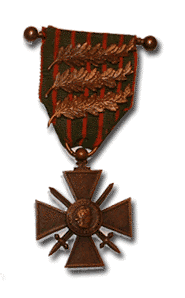United States Air Service
USAS HistorySummary 1917-1918 Lafayette Escadrille
N.124/Spa.124 1st Observation
1st, 12th, 50th, 88th 1st Pursuit Group
27th, 94th, 95th, 147th 1st Bombardment
96th, 11th, 20th 2nd Pursuit Group
13th, 22nd, 49th, 139th 3rd Pursuit Group
28th, 93rd, 103rd, 213th 4th Pursuit Group
17th, 148th, 25th, 141st 5th Pursuit Group
41st, 138th, 638th 3rd Air Park
255th. List of Aces
United States Naval Aviation
US Naval AviationUnited States Marine Corps Aviation
US Marine AviationAircraft
 Nieuport 28
Spad VII
Spad XIII
Fokker Dr.1
Albatros D.Va
Fokker D.VII
Nieuport 28
Spad VII
Spad XIII
Fokker Dr.1
Albatros D.Va
Fokker D.VII
Website: Atlanta SEO
E-mail us

Toul, France
The Americans first trained at the main air base at Issoudun, a small town of 13,500 or so, located on the Route National 151 that connects the towns of Bourges and Chateauroux, nearly 170 kilometers south of Paris. Then they started moving around - first to Toul - the so called quiet sector very near the French-German border of that time- to get engaged in combat. Toul is approximately 270 kilometers east of Paris in the direction of Nancy and eventually Strasbourg, which was then in German hands as a result of the Franco-Prussian War of 1870-1871. Toul and surroundings were considered a quiet sector though, paradoxically, it is located about 60 kilometers south east of Verdun and about and, in fact, closer to the 1871-1918 border of France and Germany than any other place the American pilots would be located until they relocated later to Rembercourt on September 1st, 1918.
The units had started forming up in Toul, getting their aircraft - at first without any guns, and after that getting machine guns for their aircraft. They practiced flying, patrolling and various organizational tasks. They even got into combat from time to time. But the front was shifting fast and the American pilots were needed to get into real combat urgently both for their own pride but also because the French and British needed urgent help.
In late May the Aviation Section was removed from the Signal Corps and became a separate entity as the United States Air Service, under Brigadier General Mason Patrick. The 94th was united with the 95th, 27th and 194th squadrons into the 1st Pursuit Group. Three observation squadrons were operating regularly, and a bomber squadron, the 96th. was forming. Plans were afoot to concentrate all these units as the 1st Brigade air service under Colonel Mitchell and move it to the critical Chateau-Thierry sector.
However, the loss of key men and a subsequent slump in morale plagued the still very young United States Air Service.
From there they moved again to Touquin:
"The U. S. 1st Pursuit Group, comprised of the 17th, 27th, 94th, 95th, 103rd, 147th and 183rd Aero Squadrons moved to Toul to Touquin aerodrome (Melon Field) on 27-8 June, 1918. At this time most of the squadrons had about 17 pilots and 24 planes. In four weeks in the new sector, the Touquin group shot down 38 Germans, but lost 36 American pilots."
"We settled upon an old French aerodrome at Touquin, a small village some twenty- five miles south of Chateau-Thierry and the Marne River. The aerodrome was large and smooth and abundantly equipped with the famous French hangars which consist of steel girders with walls and roofs of canvas. They were very spacious, quite cool in summer and camouflaged admirably with the surrounding scenery. But no provision had been made at Touquin for the pilots and officers. All of our aeroplanes flew from Toul to Touquin, while the rest of the aerodrome impedimenta was carted rapidly away to the new quarters in lorries, trucks and trailers. The pilots of Squadrons 27 and 147 were rather new at that time; and it was thought wise to assign some of the older pilots of 94 and 95 Squadrons to the task of leading them through the air to the new field."
When the 27th and 147th joined the 94th and 95th Aero Squadrons, they joined with 30 officers and 190 men and 29 officers and 196 men respectively. So this figure implies a total strength of approximately 120 officers and 760 support staff - mechanics, etc.
The 1st Pursuit Group operated in support of the French 9th Army and through June 25th had "brought down 58 hun planes, 27 of which were confirmed."
To make things worse, Rickenbacker - who replaced James Norman Hall as flight leader for his flight within the 94th Aero Squadron - would be out for several weeks - hospitalized and otherwise put out of action by a mastoid infection.
Learn more about the United States Air Service's 1st Pursuit Group:
Toul, Touquin,
Saints and Mauperthuis and Rembercourt,
"American Eagles" - 345 page illustrated history of US Combat Aviation in World War I
Events/Airshows
 Events/Airshows
Events/Airshows
Pilots/Aviators
 Raoul Lufbery
Raoul LufberyAce of Aces Eddie Rickenbacker
26 victories Quentin Roosevelt
Son of President KIA Frank Luke
18 victories in 17 days Eugene Bullard
1st African Am. Pilot David Ingalls
1st US Navy Ace List of USAS Pilots
Find a Relative American WWI Pilots
Mini bios
USAS Research
 USAS Videos
Reading List
USAS Videos
Reading ListWWI US Aviation Related Links
WWI US Aviation Credits War Wings
by Phillip W. Stewart WWI Maps
Units & Airfields Payne Field
USAS Aerodromes now... USAS Archives
Questions? Need Help? American Expeditionary Forces
WWI Doughboys in France